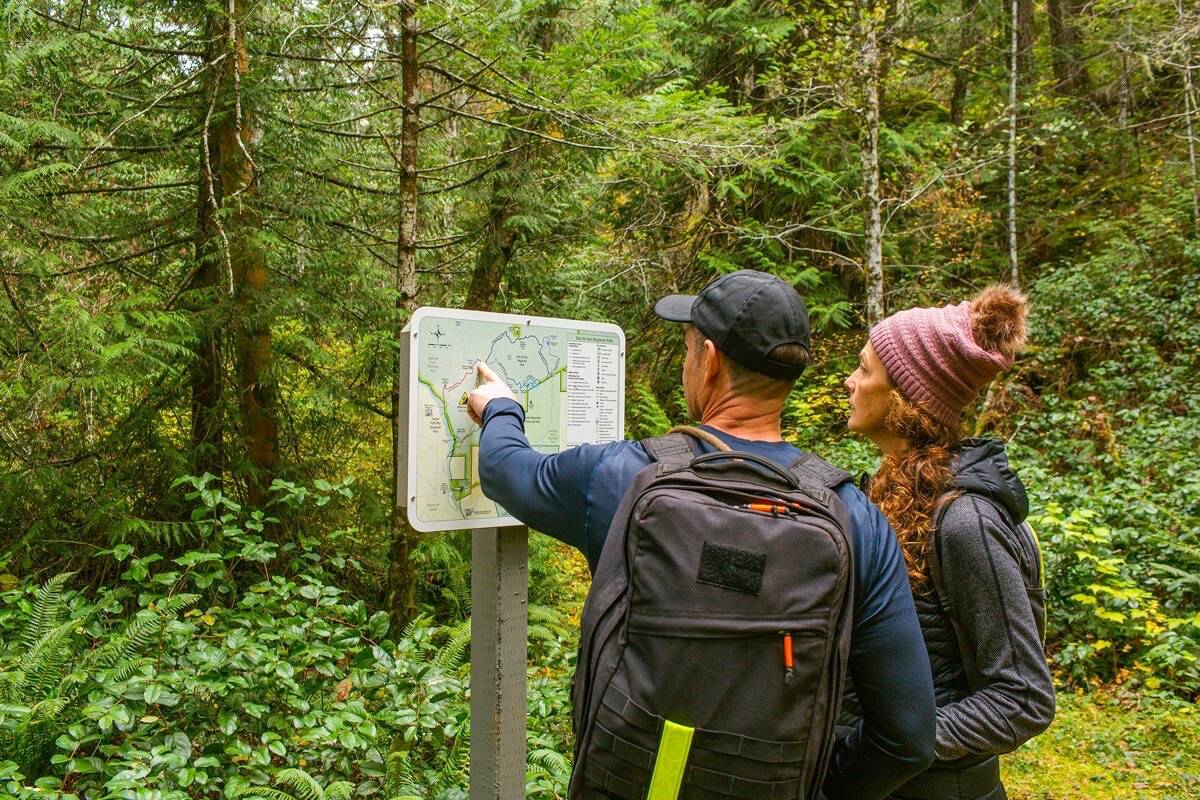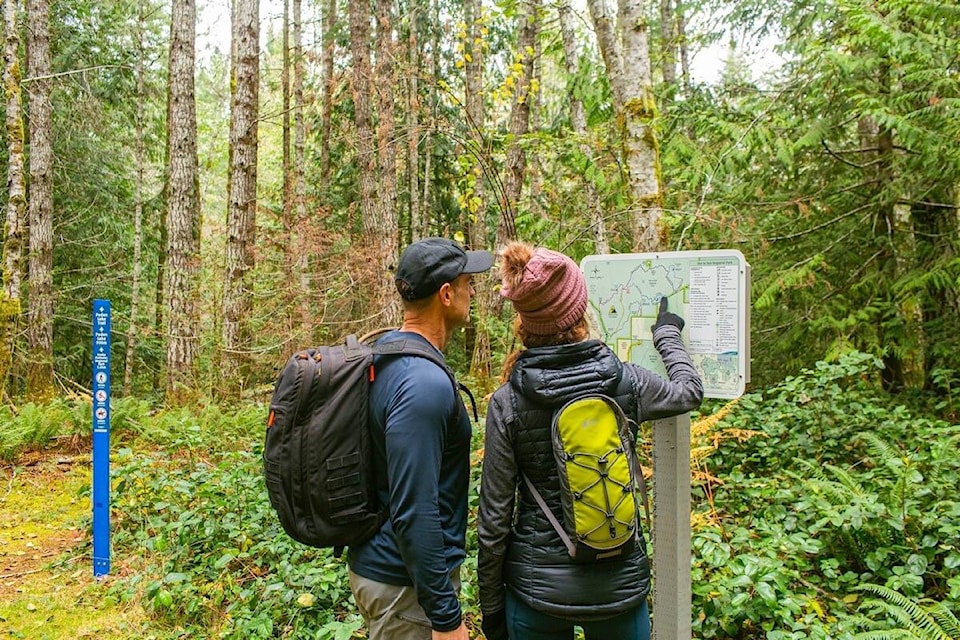The Capital Regional District reminds park visitors to help preserve beautiful nature spaces by engaging in simple park etiquette.
“Our 33 CRD Regional Parks see about five million visits a year – that’s a lot of footsteps through the trails,” said Devon Smith, communications coordinator, noting that in the last 10 years, visitation has increased by almost 50 per cent.
“With this increase in visitation, we see a related increase in activities that can have negative impacts to natural spaces, like unsanctioned trail use and creation, and people leaving and dumping trash.”
As population density continues to increase in the CRD, park visitation will increase, so it’s important to remind people of simple park etiquette they can apply to help better protect parks, Smith said.
READ ALSO: Anonymous trinkets connect Oak Bay community with crafted kindness
“One of the simplest ways people can help protect and preserve our parks is by following official park maps and staying on sanctioned trails,” said Smith, adding that all CRD parks have official maps on the website that show official trails, access points and other features.
“The challenge we’re encountering more often these days is increased use of unsanctioned, or unofficial trails. To help prevent this, we’re encouraging folks, particularly those who use open-source mapping apps like AllTrails, Trailforks and Strava that show all the trails within the park, to make sure they’re choosing official, CRD-sanctioned trails,” she said.
Parks staff don’t maintain unsanctioned trails, meaning they may be unsafe. Hiking, biking or camping in undesignated areas can negatively impact natural areas and wildlife, can spread invasive species like carpet burweed and can even lead to an increase in search and rescue calls in more remote areas.
“Unsanctioned trail use over time can have huge impacts on sensitive ecological and cultural areas of importance, particularly in areas where there are species at risk or that have historic and ongoing cultural significance for local First Nations,” Smith said.
READ ALSO: Rock painting gains popularity on Vancouver Island
Apart from staying on official trails, park visitors can also practise simple park etiquette by leaving no trace.
“We always ask folks dispose of trash and dog droppings properly when they’re in CRD parks, and if you’re hiking in a more remote area, likely away from garbage cans, it’s always a good rule of thumb to be prepared to pack out what you pack in,” Smith said.
CRD parks are also all non-smoking spaces for the enjoyment of all park visitors and for safety reasons.
“This is especially important as we move into the summer months where there’s a heightened risk of wildfire,” Smith said. Last summer saw two wildfires in regional parks, both of which were suspected to be human-caused.
Through May and June, the CRD will share social media posts under the hashtag #ProtectCRDParks with more reminders and ways visitors can help protect CRD parks.
Find official park maps online at crd.bc.ca/parks.
READ ALSO: CRD parks now recognized in federal protected areas database




